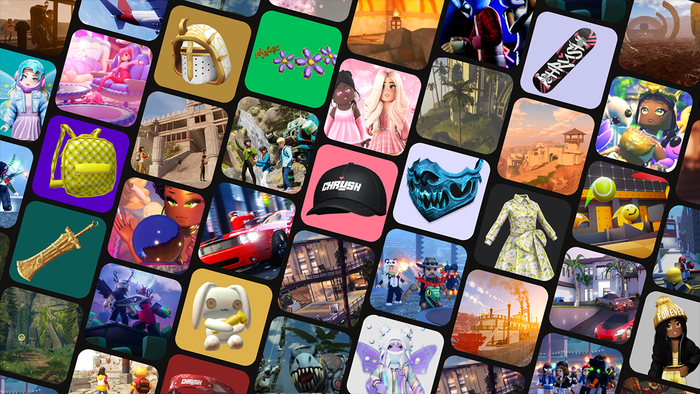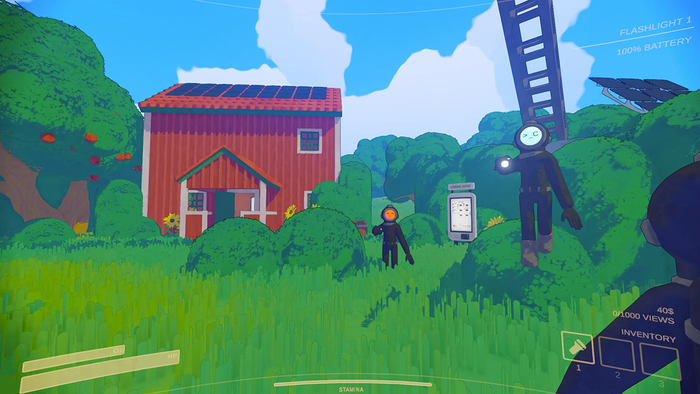Chris Cataldi, co-founder and COO of Genvid Technologies, explores the evolution of the tech behind the unique TV show & video game hybrid and reflects on the lessons learned along the way.

With Rival Peak's first season now closed, Genvid and developer Pipeworks Studios shared the following post from Chris Cataldi, co-founder and COO of Genvid Technologies, to explore the evolution of the tech behind the unique show-video game hybrid and reflect on the lessons learned along the way.
As a Massive Interactive Live Event, or MILE, Rival Peak didn’t just evolve from a storytelling standpoint over its 3-month Season 1 run. Genvid’s Live Operations and Services teams helped ensure that the entire Rival Peak experience improved and expanded dramatically as the interactive reality show-cum-adventure game unfolded. New features, functionality, mini-games and more were added to Rival Peak on a nearly daily basis as the dev and support teams tweaked the show and its thirteen simultaneous, 24/7 interactive livestreams to address audience requests and fine-tune the entire experience.
When Rival Peak (and its weekly wrap-up show, Rival Speak) launched in early December 2020, we knew it would be a work-in-progress with a lot of on-the-fly learning and reactive tweaks. As the first widely accessible MILE, the real test began when Facebook users worldwide were exposed to the unique experience that the show offers. As we started seeing usage data, we found a lot of ways to improve Rival Peak from a live game, retention and engagement perspective.
Working closely with Pipeworks Studios, the veteran game development firm which created the AI, simulation and rendering solutions that brought Rival Peak to life, we at Genvid identified, designed, built and implemented a host of improvements ranging from UI expansions and embedded summary videos to entire pop-up mini-games delivered directly in the livestream itself. Genvid’s growing Services division also provided all the back-end tech and live operations expertise, liaising between Pipeworks and Facebook to ensure fixes and additions were built correctly and implemented seamlessly.
Much like a League of Legends or World of Warcraft live game experience, we updated Rival Peak on a weekly basis with each episode of Rival Speak, as well as adding new features on an ad hoc basis as we received requests from users or our designers. So it was very much a live, collaborative process as the season progressed. Unlike a traditional live game experience, those updates were instantaneous from the users’ perspective – because the content resided entirely in the cloud, even the largest updates were delivered to users without any delay in the way of download or installation. Users never had to wait for a new build to be downloaded or installed, because nothing resided on their local device.

An interactive map provided better visibility of the AI contestants as well as quicker navigation.
Among the biggest updates and changes implemented during Rival Peak’s three-month live run were:
Adding Rival Speak VODs into the Rival Peak instant game (Why: users weren’t always able to catch episodes of Rival Speak as they aired. What: enabling access to episodes of the weekly wrap-up show while watching the 24/7 interactive livestreams)
iOS support (Why: numerous requests from users eager to access the show from their preferred mobile devices. What: following this mid-season improvement based on viewer demand, fully 10 percent of the audience accessed the show via iPhone or iPad)
Achievements system (Why: users requested more ways to gauge their involvement with the show and cast. What: rewarding viewers for reaching various milestones and giving them ways to express and compare their dedication/support)

Achievements were added mid-season, based on user feedback
Various UI and UX improvements (Why: user behavior data indicated some initial lack of understanding re: input controls and availability of past character interactions. What: adjustments and additions to the user interface to deliver more information more effectively, about the show and its characters, in the livestream overlay)
Story Recaps (Why: with a dozen separate character livestreams and a constantly evolving storyline, users asked for more ways to see more of the storyline as it unfolded. What: text-based “TL:DR” summaries of past days’ activities and events, accessible via in-stream pop-ups (including VODs))
Match-3 and Memory Mini-Games (Why: users sometimes had to wait as long as 90 seconds after voting to see which choice or decision won out. What: providing additional entertainment, lore, and point-generating opportunities to stream viewers while results of communal vote-based decisions were tallied)

Mini-games (Memory and Match-3) gave viewers fun point-generating activities while awaiting vote tallies
Interactive Map (Why: with 12 contestants scattered around a densely forested terrain, users had difficulty quickly gauging where all the contestants were, which zones of the locale were accessible/populated, etc. What: in-stream pop-up world map enabling faster navigation of the sprawling Rival Peak terrain with the ability to jump directly to any character’s stream by location)
Tributes (Why: users indicated they wanted even more ways to impact the show and interact with the show and the story. What: Tribute experiences are game-wide and enable viewers to contribute massive amounts of points toward a goal that unlocks a cut-scene and story.)
Streamers as “Concierge On-Boarding” (Recruiting popular streamers to host “watch parties” of the interactive livestreams, work with other viewers to decipher clues, rally behind specific AI “contestants” in the show, etc.)
The biggest challenge to implementing all these major improvements and additions in real-time was, predictably, the many bugs that were created in the process. In part because there were three distinct teams (Facebook, Genvid and Pipeworks) involved in all aspects of adding new content and functionality, finding and eliminating those bugs was an ongoing, joint effort. We were “building the ship as it’s flying,” so to speak, and between the Genvid SDK integration and the Facebook SDK integration, almost everything that arose in the way of bugs or “technical difficulties” was new to everyone on the project. For an instant game with embedded, interactive livestream AND embedded VODs, there isn’t exactly an existing manual for reference!
Combined with the fact that Facebook has policies related to delivering content via its platform, and the content was taking a different form from any previous project (on Facebook or anywhere else), the coding and QA teams worked around the clock throughout Rival Peak’s 12-week season to ensure quick, stable, seamless delivery of all the changes occurring in-game/-stream. While Genvid’s unique SDK has been integrated in dozens of traditional games, this was the first time it was deployed on Facebook, so Facebook’s engineering team was an invaluable source of insight and expertise at every step.
While Rival Peak was unique in myriad ways, the services team did bring past learnings to bear in a broad sense, as previous Genvid-powered live products gave us a general understanding of the needs and requirements of maintaining and evolving multiple interactive livestreams. As one example, each instance of the CS:GO esports championship broadcasts that featured Genvid’s enhanced livestreaming tech was more sophisticated and robust than the previous one, as we adapted the offering to reflect user input – including within a single competitive event over a 72-hour period.
This type of dynamic iterating is of course a well-established “best practice” in the games industry, where most of the Genvid team cut its teeth. While it’s not common practice outside of game development, bringing it into non-game interactive media with Rival Peak was challenging but necessary – and made a world of difference in attracting and “indoctrinating” new viewers and giving existing viewers more reasons to tune in more often.

Story recaps and VODs enabled viewers to quickly catch up on anything they missed
Improvement through bi-directional feedback occurred at several “frequencies” during the Rival Peak season, both minute-to-minute, week-to-week and month-to-month:
Minute-to-minute, the viewers’ input, both collective and individual, both influenced the story and the characters, and also informed all manner of tweaks and improvements in terms of UI and UX.
Week-to-week, the viewers’ input (including which contestant was eliminated from the show) was incorporated into Rival Speak, the live-action weekly wrap-up show hosted by Wil Wheaton (with each episode averaging more than 8 million views).
Month-to-month, viewers’ input (okay, demands!) drove improvements ranging from iOS support to a full-fledged “new viewer tutorial” video, in-stream pop-up recaps, and more.
Game developers and social media platforms have embraced the “games as service” model, constantly iterating on the user experience in terms of content, engagement, new features and so forth. Bringing those sensibilities to “transmedia” products like Rival Peak was instrumental to the show’s ultimate success. Rival Peak brings engagement from a game-centric perspective and applies it to a quasi-reality TV experience. Traditional film and television would love to have the luxury of applying these tactics, but they’re constrained by the linear nature of their content and their distribution systems. For example, no one – including the developers and producers – knew how the show would end, due to so much of the story being dependent on viewer input occurring around the clock. Rival Speak aired Wednesday nights, and was in production until Weds mid-day as the writers, voice actors, and Wil Wheaton worked to incorporate story and cast developments that took place just hours before airtime.

“Concierge” streamers hosted watch parties of the interactive livestreams
Another novel aspect of the Rival Peak experience, for both viewers and those of us pulling the levers and twisting the dials behind the scenes, was the yin-yang dynamic between Rival Peak the quasi-game (via the thirteen interactive livestreams) and Rival Speak, the quasi-traditional weekly wrap-up show. Unlike other “regular” reality TV programs, even those with fly-on-the-wall, live online feeds between “anchor” shows (e.g., “Big Brother”), Rival Peak / Speak was in the unique position of leveraging its counterpart to extend the game into the show and vice-versa. Simply due to sheer volume, there were lots of moments and elements in the livestreams that couldn’t be recapped in Rival Speak. Similarly, while Rival Speak is essentially the weekly wrap-up show, as the weeks progressed it became its own lore generator – which is part of the reason we added highlight VODs from the wrap-up show into the interactive livestreams as optional pop-up content.

Tributes give viewers more ways to interact with the content, impact the “contestants” and shape the story
As a 24/7, mobile-first, global transmedia experience, we needed to be nimble during the entire three-month season of Rival Peak/Speak, with ad hoc meetings involving numerous teams across multiple companies. Development and QA occurred 24/7, all around the world, from India and the Philippines to North American and Europe. It was a resource-intensive project to be sure. But the massive number of viewers, and the incredible level of engagement and involvement from those viewers, more than justified the planning and execution efforts, and we’re already working on several similar projects that bring broadcast experiences to games and game-like sensibilities to broadcast.
Chris Cataldi is co-founder and COO of Genvid Technologies. Prior to Genvid, Chris oversaw business development and strategic planning for Shinra Technologies, the cloud gaming subsidiary of Square Enix Holdings.
About the Author(s)
You May Also Like







